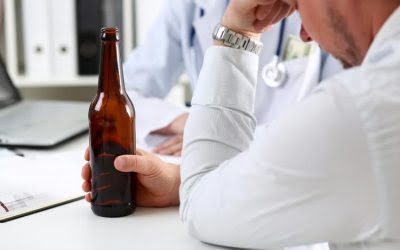It is also likely in the authors’ opinion that in patients with preexisting cardiac disease (hypertrophic or ischaemic) that alcohol acts synergistically to potentiate fatal arrhythmia in some cases. There is just simply not enough data on this at this time from this study to answer this conclusively. Alcoholic Ketoacidosis (AKA) is a serious medical condition that occurs when the body breaks down fatty acids for energy instead of glucose due to prolonged alcohol abuse.

What Are the Symptoms of Alcoholic Ketoacidosis?
It kills around 178,000 people annually across the country, shortening their anticipated lifespan by about 24 years. The ketones in the body can cause an electrolyte imbalance, which can lead to confusion, unconsciousness, and cardiac arrest. In some cases, AKA may require hospitalization in order to monitor the patient and to ensure that the condition does not worsen. It is important to recognize the signs and symptoms of AKA in order to seek treatment in a timely manner. Treatment for AKA usually alcoholic ketoacidosis smell involves the use of intravenous fluids to restore electrolyte balance and to replenish lost fluids.
Alcohol Excess Group
Medically supervised detox is part of a general approach to addiction treatment called medically-assisted treatment (MAT). MAT is supported by the scientific community to successfully treat alcohol and other drug addiction and involves supervised Substance abuse detoxification, treatment planning, and counseling. If you’re unsure about treatment, motivational interviewing may be a good first step. Motivational interviewing is a non-judgmental therapeutic approach that encourages you to examine your problematic alcohol use and evaluate your need for treatment. If you or someone you know has these risk factors and displays any of the signs and symptoms of AKA, they should receive treatment immediately.
- If your blood glucose level is elevated, your doctor may also perform a hemoglobin A1C (HgA1C) test.
- This can be achieved by testing newly described biomarkers in blood or urine such as ethyl glucuronide, which can detect ethanol intake up to 80 hours after the blood ethanol level has fallen to zero 26.
- Therefore, rather than relying on the presence of hyperglycemia, close attention to signs and symptoms of DKA is needed.
- The ketones in the body can cause an electrolyte imbalance, which can lead to confusion, unconsciousness, and cardiac arrest.
Heavy Drinking and Sudden Stop
Undiagnosed diabetes https://mafia99.net/tips-and-benefits-of-going-back-to-school-as-an/ mellitus is common at autopsy, with 20% of all diabetic ketoacidosis deaths in our series not having an existing diagnosis of diabetes. One criticism of the study is that we only used acetone as a biochemical marker of ketoacidosis instead of ß-hydroxybutyrate. We do not measure acetoacetate, but ß-hydroxybutyrate has replaced acetone as the standard ketone body used to identify ketoacidosis in both vitreous humour and blood.


